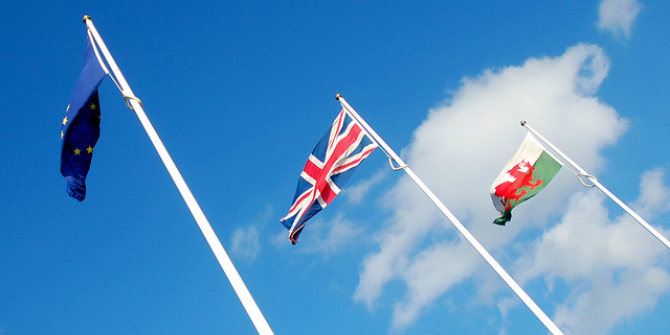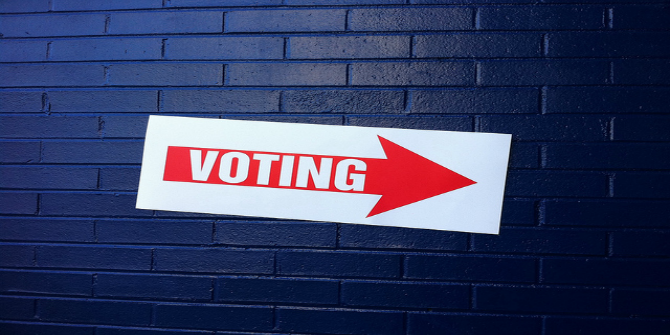 Nudge theories have never been more popular, and have even found their way into the heart of Government. Joe Simpson of the Leadership Centre asks whether ‘nudge’ based thinking could play roll in increasing electoral participation, and demonstrates what we can learn from recent political campaigns in America. The evidence shows that despite a number of new techniques gaining in popularity, face to face contact is still the best way to get people to the polling booth.
Nudge theories have never been more popular, and have even found their way into the heart of Government. Joe Simpson of the Leadership Centre asks whether ‘nudge’ based thinking could play roll in increasing electoral participation, and demonstrates what we can learn from recent political campaigns in America. The evidence shows that despite a number of new techniques gaining in popularity, face to face contact is still the best way to get people to the polling booth.
Since the 2008 publication of Thaler and Sunstein’s seminal book, ‘Nudge’, behavioural change has become increasingly popular. It is testament to the traction that their theory has gained in mainstream political discourse that there is even a Behavioural Insight Team – known colloquially as the ‘nudge unit’ – operating from the heart of Government.
As surprising as it may seem, however, the organisations with the greatest experience of ‘nudge’ type approaches are political parties themselves. Their interest in behavioural change, narrow and defined by the electoral cycle though it is, is in evidence in many recent electoral contests, particularly in the US.

During last year’s Presidential and Congressional election cycle, over $6 billion dollars was spent by candidates. Unsurprisingly, when that level of money is in play, parties, donors and candidates take an interest in what is effective. Historically, great party campaigners have claimed to ‘know’ what works, but the difficulty for academic researchers in evaluating these claims is the classic “post hoc ergo propter hoc” problem.
Over the last decade, however, a number of American researchers have been able to robustly test what is and isn’t effective in getting voters to register and to vote, most notably by Green and Gerber. What was required to carry out the research were political candidates themselves, provided they were prepared to subject their campaigns to the rigour of the random control trials required to deliver sufficiently robust evidence.
When researchers first started proposing this kind of approach, the responses weren’t universally positive, with candidates reluctant to fund a project which could see a significant number of their voters missing out on whatever turned out to be the most effective approach. Fortunately for the researchers, the Obama team opened up their campaign to them, and incorporated the tests into their campaign model.
So what was learned? First, some communication is better than nothing. Exaltations to civic duty – the common method for local government campaigns to get people to register to vote – have only a very limited impact. More effective is claiming that your vote can make a tangible difference, hence the standard Liberal Democrat ‘eve-of-poll’ leaflet showing that the election in question is a ‘two party race’ with the yellow team just behind.
More effective still is communication which conveys social norms. For example, distributing a leaflet saying “most people in this street vote” increases the number of people who actually turn out. The so called Hawthorne effect– telling voters that a study on who does and doesn’t vote is being carried out – is very effective, but social pressure works best of all. This approach could see local residents receive a leaflet telling them which of their neighbours did and didn’t vote, alongside a promise to give people the same information for the forthcoming election. While effective, the unfortunate researcher tasked with liaising with the residents in question did receive death threats, which perhaps explains why it has not become more widely utilised.
With the decline in the activist base of parties there has been a lot of interest in approaches such as telemarketing and of use of phone banks. Green and Gerber have even tried to estimate the cost of every vote by each of the strategies adopted.
What they discovered was that the most effective way of persuading people to vote is the tried and trusted method of knocking on someone’s door and speaking to them personally. In America, effective face-to-face campaigning often requires the use of a paid workforce, particularly in Primary Elections when candidates don’t generally have a party machine at their disposal. Even allowing for the extra cost, however, canvassing still offers the best money-to-vote ratio for prospective office-holders.
Even more effective than paid-for canvassers are local volunteers. These both cost less and deliver more votes. Many people think of the Obama operation was built around social media, but while this was an important component of his two successful Presidential election campaigns, it was primarily used to build new social and personal connections, for example arranging for Jewish Americans living in New York State to contact other Jewish Americans living in the swing state of Florida.
The core Obama model was a tight volunteer structure, where the job of organisers was to recruit and sustain groups of volunteers, headed up by local organisers (themselves usually volunteers). The evidence shows that it works.
A final thought; candidates have an interest in us registering to vote, and which way that vote is cast. But for a citizen, voting is seldom a life-changing decision. In fact, it is rarely even an ‘election changing’ decision. So if, as the evidence seems to show, written communication is relatively ineffective in influencing that decision, why do so many other strategies to change social behaviour – such as efforts to persuade people to eat better or stop smoking – still have literature at the core of their effort to persuade?
This article was originally published on the Democratic Audit blog.
Note: This article gives the views of the author, and not the position of the British Politics and Policy blog, nor of the London School of Economics. Please read our comments policy before posting.
Joe Simpson is the Director of the Leadership Centre.








4 Comments